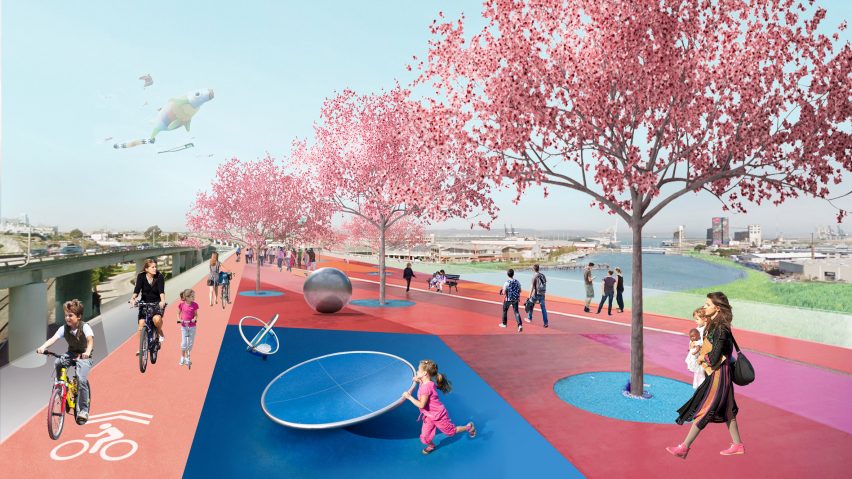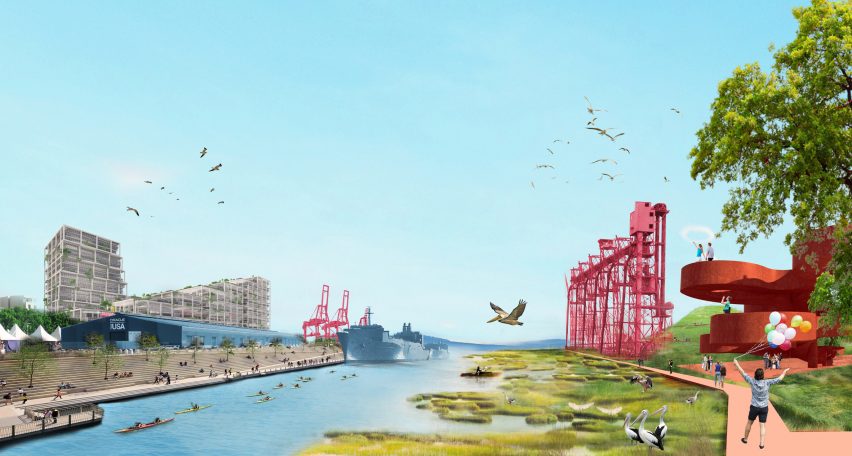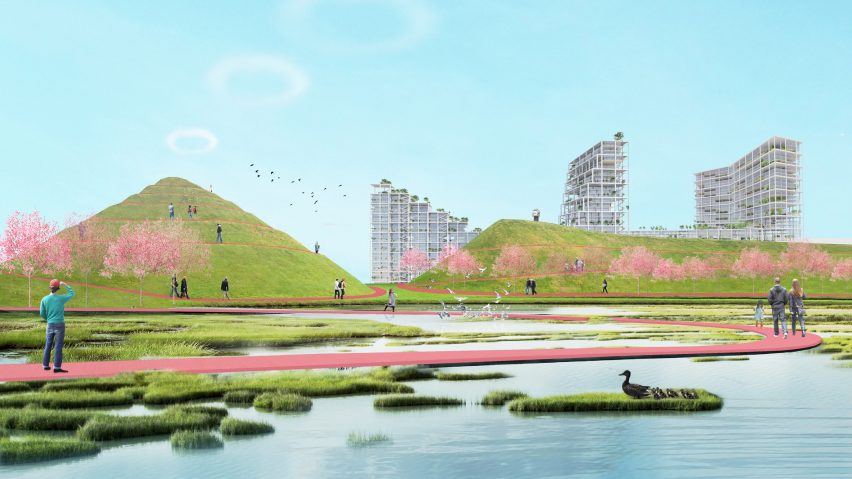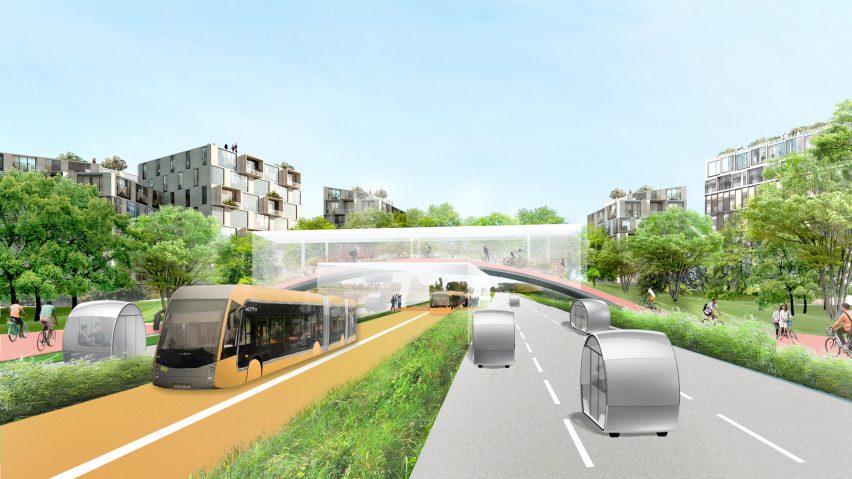BIG unveils scheme to protect San Francisco creek from flooding
Danish firm BIG has developed a proposal to protect the San Francisco Bay from flooding caused by climate change, which includes building floating villages connected by ferries, a red-hued cycle route, and a highway for autonomous vehicles.
BIG developed the scheme with One Architecture + Urbanism (ONE) and Sherwood Design Engineers (Sherwood) as part of Resilient by Design's Bay Area Challenge – a contest that calls for ideas to protect the city's coastal areas from rising sea levels and flooding caused by the warming global climate, as well as earthquakes.
As one of the 10 winning groups selected to develop proposals for different areas in the Bay, the BIG + ONE + Sherwood team were tasked to address the problems in Islais Creek, which wraps an inlet of water cutting into land in southern San Francisco.

The group's conceptual masterplan aims to improve the resilience of the area by restoring acres of natural spaces around along the water's edge. Current underused areas would be pulled away from the water's edge and paved surfaces would be removed, to make way for plenty of greenery and parkland that could soak up excess water.
Renderings also show silos covered by mounds of earth to make green hills, while a nature pathway called the E-trail would follow the waterfront and allow residents to travel on foot or bicycle. The path would feature brightly covered flooring in a mix of blues and reds, viewing towers, trees and benches.
"In light of climate change and sea level rise, can we not just save the bay, but can we grow the bay for nature, for people and for a changing climate," said BIG founder Bjarke Ingels in his team's video presentation of the proposal.

In the first regional proposal, as part of the competitions first phase, the team one of the site's that the team chose to address was the city's South Bay, where instead of building on the land, it suggested erecting villages on small islands that could float on the water.
It also suggested taking advantage of rising water around the area's salt palms and tidal marsh, by transforming them into spaces for experimental food-production facilities.
The Resilient by Design Challenge is the latest in a string of efforts by US cities to develop urban designs in response to climate change, after a series of devastating and unpredictable weather events over the past few years.

BIG was also awarded $335 million in 2014 to improve Lower Manhattan's storm defences following Hurricane Sandy in 2012, while low-city metropoles like Boston and Miami have also revealed plans for flood prevention.
Along with solving issues of extreme weather, BIG + ONE + Sherwood's conceptual masterplan for the Bay Area also aims to tackle problems like lack of affordable housing, unemployment, traffic congestion and pollution.
Other strategies include introducing a new bus transit loop and adapting Highway 101 – a major route through the city – to make it suitable for autonomous vehicles and public transport. High-rise warehouses would also be built on land for offices and are shown in renderings to feature stepped roofs topped by gardens.

Earlier this month, the team was chosen to move forward with a site-specific proposal for Islais Creek.
BIG + ONE + Sherwood were announced as a winning team in the Bay Area Challenge late last year. Other winners include a group comprising Australian practice Hassell and Dutch firm MVRDV, which also plans to increase green infrastructure to combat flooding in the city's San Mateo County.
Landscape firm James Corner Field Operations – part of another winning group – suggests include widening the mouth of the creeks at South Bay, and developing ponds for new uses like kayaking and swimming with marshes to absorb excess water.
All the site-specific schemes are in the early stages and will be developed by the team in the coming months, with input from local residents, city officials, and community-based organisations. The final designs will be revealed in May 2018, ahead of the Global Climate Action Summit in San Francisco.
"This challenge brings the best minds together, from this region and beyond, to flip the script on how we approach resilience," said Resilient by Design managing director Amanda Brown-Stevens.
"We are stepping outside traditional approaches to address climate related vulnerabilities before we feel their biggest impact, while strengthening our region's ecological and social resilience, and creating a more economically just Bay Area."